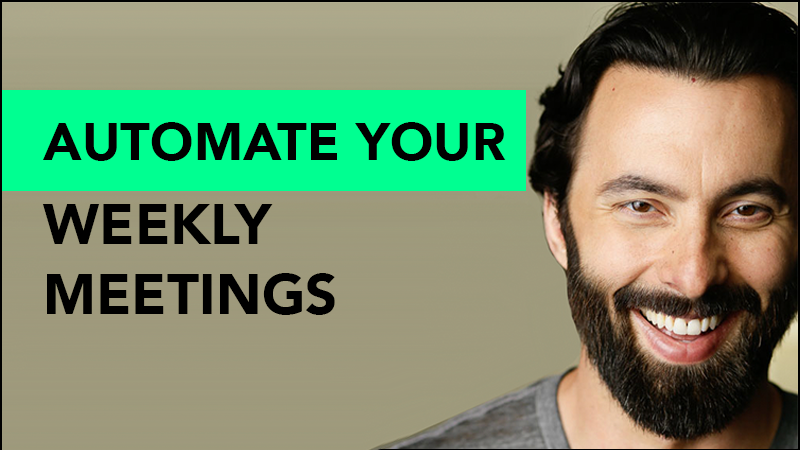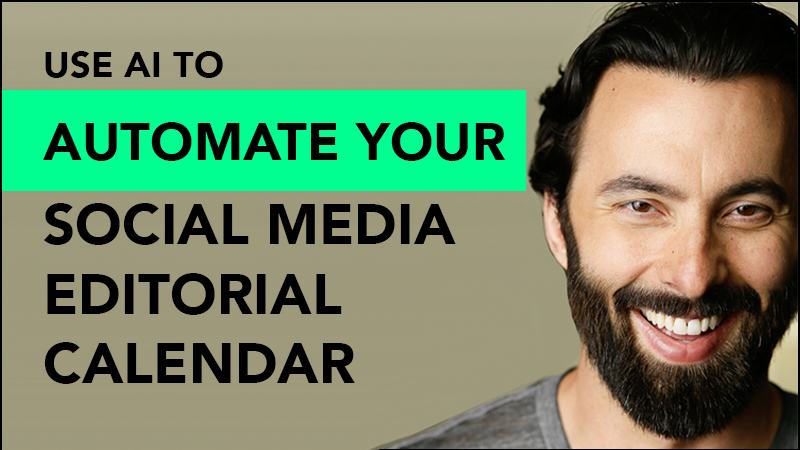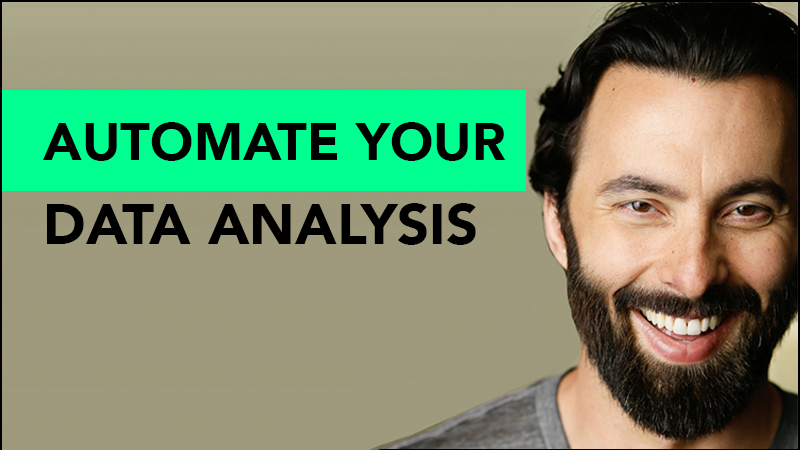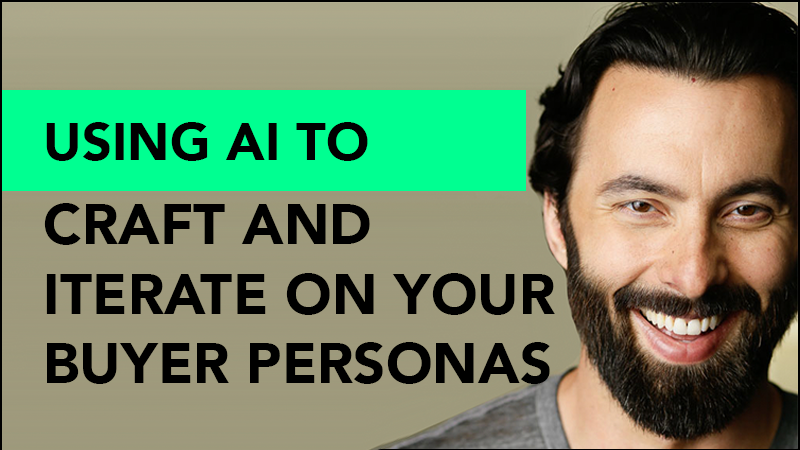
#02: Using AI to Craft and Iterate on Your Buyer Personas
8 Min Read
If there’s one key lesson that’s punched me in the face over and over in entrepreneurship...
...It’s to get to know your customer.
Intimately.
I mean… on a cellular level.
Far too often do founders just get obsessed by an idea, then spend months and thousands of dollars building it - all without really knowing who they’ll be selling it to.
This is really dumb.
I know, because I’ve done it more than once.
Trust me - there’s nothing quite like the feeling you get when you put your blood, sweat, and tears into something you’re building, and then when you push it live and start promoting it…
…You hear crickets.
Anyway - while Simon Sinek is famous for telling us all to Start With Why, I’m of the mindset that you should actually start with WHO.
Start with Who
“When you have an idea for a new company, what’s the first thing you do?”
I get this question a LOT when I give keynotes, and my answer is usually pretty surprising.
“I try to forget it.”
I imagine most people expect me to leap into action in some sort of strange way they can mimic - much like they do when they see influencers talking about their latest biohack they’ve added to their morning routine.
The boring - but true - fact is, I try to forget it because it’s my idea.
I’m not selling to me. I’m selling to customers who aren’t me.
My first question then must be - who are the people I’m selling to?
But let’s back up. Most founders either don’t create, or completely ignore their buyer personas.
They hire a swanky branding firm, and part of that firm’s deliverables are these customer avatars named things like Cynthia CEO or VP Vincent or… whatever.
Let’s be real. These just sit on the shelf collecting dust, and you go back to making the decisions you would have made anyway, right?
What you SHOULD do is use it literally every single day - and I’m going to show you how I do it.
The ELMR Framework
Forget your buyer personas for a second.
Most people won’t make decisions - including decision to buy - if the proper emotions aren’t there.
This doesn’t mean they make decisions based solely on emotions (though some do). They also need some sensible logic to back up their potential decision, and it’s useful if their core motivation lines up with the emotional and logical pieces.
ELMR stands for emotion, logic, motivation, and reward.
If you can line all four of these up properly, you can sell damn near anything to anyone.
That said, you can’t begin to line all four of these up unless you DEEPLY understand your customer.
Creating ELMR-centric buyer personas are a great place to start.
(NOTE: this is not a “set it and forget it” sort of thing. These should evolve with every single experiment you run - and I’ll teach you how I do that in my growth course.)
ELMR + Buyer Personas + AI = Awesome
Traditionally, building a buyer persona with the ELMR framework involves intensive market research, surveys, experimentation, and consumer feedback.
It’s incredibly time-consuming, and prone to bias - which skews your data and renders it less valuable.
In the age of AI, we can do better.
Your buyer persona document can be robust (mine often become a gigantic, hulking mass of information to inform my decisions pretty intricately), but it can also be simpler and still work.
Rather than showing you a buyer persona document going into the life story of one of my ideal prospects, here’s how I typically lay out the ELMR section in each of my experiment documents I’ll use for my companies and my clients’ companies.
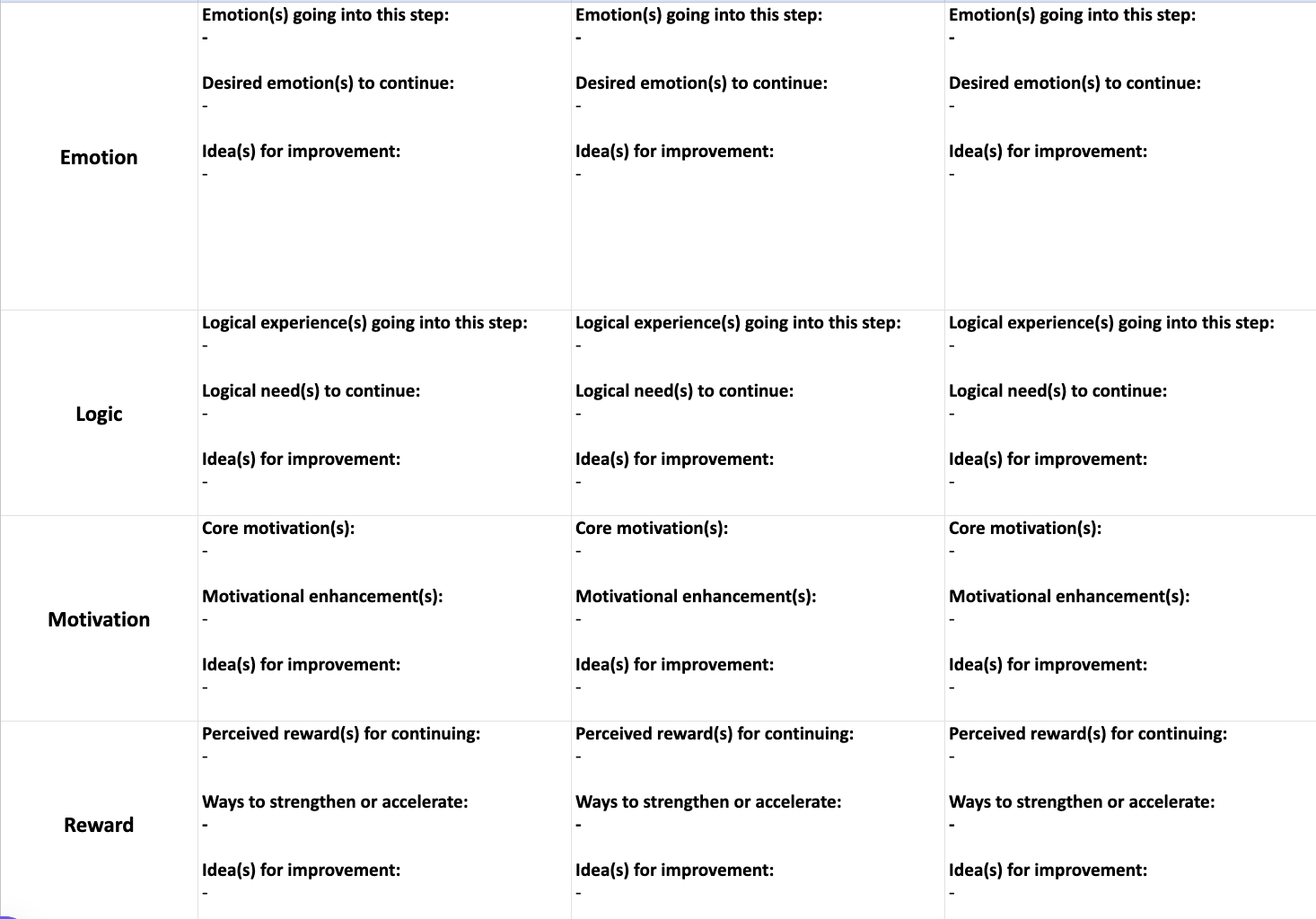
The pattern here is pretty obvious…
Emotion:
-
What was the prospect feeling before they hit this step in the process?
-
What do we need them to feel to take the next step in the process?
-
How can we catalyze that emotion in them within our customer journey?
That same line of questioning holds true (for the most part) for logic, motivation, and reward.
But… as you can probably tell, you won’t get past the first question without knowing your customers inside and out.
You’d repeat this same line of questioning for logic, motivation, and reward.
Automating ELMR Hypotheses with GPT-4
In the era of AI, we don’t have to take nearly as many cognitive leaps on our own. AI can help us, and it’s typically better at this than we are.
An example of a prompt you can use is…
My ideal customer profile is Carl, an overworked, early to mid-stage tech company founder in an English-speaking country doing at least $1m in revenue per year in revenue, but has seen his growth plateau. He is careful when spending cash as he doesn't want to slash his margins, and he is a bit skeptical of any new solution that promises the world. He is a bit jaded after being burned by various agencies or SaaS tools that overpromise and under-deliver. He identifies as highly logical and pragmatic and wants evidence to back up any claims. However, he is actually emotional when thinking about his business and his team and feels that he is in charge of everybody's success. He hates the feeling of being "sold", but he is willing to buy if he feels a solution can help him reach his goal of kickstarting his company's growth faster without working even more than he already is. He has a new wife and recently had his first child. He works from home, and he feels increasingly exhausted every day.
This prospect just arrived on our landing page, promising him a clear, step-by-step path to double his growth rate. Please use the above buyer persona and the ELMR framework to answer the following questions:
EMOTION:
- What was the prospect feeling before they hit this step in the process?
- What do we need them to feel to take the next step in the process?
- What are two specific things we can test to catalyze that emotion in them within this specific step in our customer journey?
LOGIC:
- What is this prospect's logical frame likely to be before they hit this step in the process?
- What do we need them to logically believe for them to feel comfortable taking the next step in the process?
- What are two specific things we can test to catalyze that logical leap in them within this specific step in our customer journey?
MOTIVATION:
- What is this prospect's core motivation likely to be, given that they've landed on our landing page?
- What does this prospect need to believe about our product in regards to their core motivation to take the next step?
- What are two specific things we can test to catalyze that motivational belief in them within this specific step in our customer journey?
REWARD:
- What is this prospect's ideal reward in their role?
- What does this prospect need to reward in the context of them landing on this step in our customer journey?
- What are two specific things we can test to amplify the prospect's perceived value surrounding this reward within this step in our customer journey?
…Yes, this is a beefy prompt.
But it works like a charm. Here’s the output:
EMOTION:
- Before landing on this page, Carl is likely feeling overwhelmed and frustrated due to the stagnation of his company's growth and the pressures of his personal life. He may also be feeling a sense of disappointment from past experiences with agencies and tools that didn't deliver as promised.
- To take the next step in the process, we need Carl to feel hopeful and reassured that our solution could be different and could genuinely help him reach his goals without the need for more personal sacrifice.
- Two specific things we could test to catalyze this emotion:
-
Include a testimonial section with real stories from similar customers who've achieved tangible results. This could create a sense of optimism and trust.
-
Use empathetic, reassuring language that acknowledges his pain points and reassures him that our solution is built with his specific needs in mind. This could help alleviate his skepticism.
LOGIC:
- Carl's logical frame before this step is likely one of skepticism and caution, due to his past experiences with underperforming solutions. He's looking for evidence and substance, not just promises.
- He needs to believe that our solution is practical, proven, and cost-effective. It's not about fanciful claims; it's about clear, tangible results.
- Two specific things we could test to help him make that logical leap:
-
Include a clear, concise explanation of how our solution works, with data to back it up. Break it down into digestible steps.
-
Offer a free trial or a demonstration of our product. Let him see firsthand how it works and what it could do for his business.
MOTIVATION:
- Carl's core motivation is likely twofold: to reignite the growth of his company and to regain balance in his life, particularly given his new family responsibilities.
- He needs to believe that our product can deliver on these goals without risking his current revenue, and without requiring an even greater time investment from him.
- Two specific things we could test to catalyze this motivational belief:
-
Emphasize the efficiency of our solution in marketing materials, highlighting how it can deliver results in less time and with less effort.
-
Show concrete examples of how our solution has helped similar businesses reignite their growth and how it's enabled founders to spend less time working and more time on their personal lives.
REWARD:
- Carl's ideal reward would be seeing a significant boost in his company's growth rate without additional strain on his personal life.
- In the context of landing on this page, he needs to see the potential reward of his time and trust investment: accelerated growth, time savings, and a more balanced life.
- Two specific things we could test to amplify perceived value surrounding this reward:
-
Use case studies or success stories of similar customers who've experienced substantial growth while also reducing their workload.
-
Offer some form of "satisfaction guarantee" or "money-back guarantee" to minimize perceived risk and show confidence in our product's ability to deliver rewards.
What Comes Next
It’s pretty simple.
Run the experiments GPT-4 recommended and report back with the results.
Use those results to iterate on your understanding of the initial buyer persona.
With every test you run, you deepen your understanding of what makes your buyer persona think, feel, and behave the way they do.
…And your experimentation win rate goes up and up and up.
That's it for today, folks.
See you next week with more insights on the intersection of automation, AI, and growth.
Stay hungry.
- Travis Steffen
---
If you’re hungry for more, you can…
I share more bite-sized nuggets about starting, growing, and selling companies every single day.
Keep Your Growth Tools Sharpened with my Weekly GrowthDay Newsletter
Once per week on Wednesday, I’ll share my top growth philosophies, tactics, tips, hacks, and lessons learned building, growing, and selling 8 companies - and what I’m doing to build, grow, and sell the next one.

